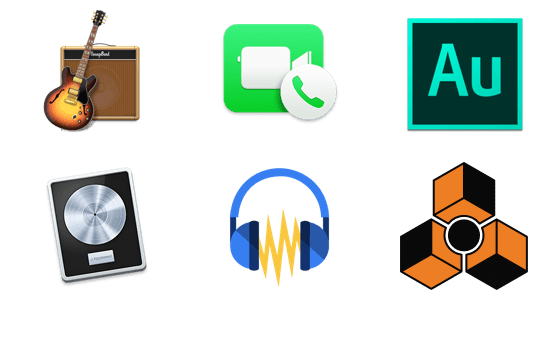
- Audio loopback controleaning drivers#
- Audio loopback controleaning driver#
- Audio loopback controleaning portable#
- Audio loopback controleaning pro#
- Audio loopback controleaning professional#
At nearly three times the cost of a Focusrite Scarlett unit, it better deliver the goods. The main downside of course is the price. The Pultec EQ, Teletronix LA-2A compressor, and the UA 610-B pre-amp plug-ins are outstanding and extremely versatile. However, in this case, the plug-ins that come with UA Apollo units are some of the best audio plug-ins available.
Audio loopback controleaning driver#
I usually think the software that comes with audio interfaces (other than the audio driver itself) is just marketing fluff. If your requirements extend beyond the spoken word, this unit is highly recommended. And, it has virtual channels for internal audio loopback of other computer applications. It comes with two XLR/instrument inputs if you’re using two mics. The software driver allows for real-time, zero-latency monitoring.
Audio loopback controleaning professional#
The sound quality is top-notch in every way.įor podcasters and voice-over artists, this unit paired with a quality mic gives you truly professional studio-sounding results. The Solo (previously known as the Arrow) is the baby of the line, with the same high-end analog to digital converters and flawless pre-amps as the top-of-the-line rack mounts.
Audio loopback controleaning portable#
In our opinion, the Apollo line interfaces are the best portable audio interfaces you can buy. With an option for two mics, built-in loopback software, and crystal clear pre-amps, you can’t go wrong.įor voice-over projects that require only one microphone (one XLR input) and no loopback features, you could spend less and get the same low latency and great pre-amps with the Focusrite Scarlett Solo. The Focusrite Scarlett 4i4 is perfectly suited to podcasters.
Audio loopback controleaning pro#
We did not test it with an iPad, but apparently, it also works on any iPad pro with a USB-C input. It includes 2 XLR/instrument inputs and 4 line outputs. The knobs are tiny and the display lights make a bit of guesswork necessary sometimes to set levels. If you ever find yourself deep into a project with loads of plug-ins and suddenly latency (what you hear in the monitor is delayed as it runs through your system) becomes an issue in recording, it can be a real headache. It means you have an option to send the signal directly through the interface and not through your computer, allowing you to hear a real-time version of your voice or instrument regardless of how bulky and memory-hungry your project is. The ‘Zero-Latency’ feature is a game-changer. Universal Audio units have had this feature for years but now Focusrite Scarlett interfaces have it as well. Its pre-amps are not as clean as the UA Apollo, but they come close. This is the most popular audio interface for a reason. We recommend a listen with headphones to hear the subtleties yourself below. Coming in 3rd and 4th, the SSL 2+ and the Audient ID4 delivered clearly. The Universal Audio Apollo Solo and Focusrite Scarlett 4i4 sounded the clearest and most honest to our ears – in that order. Both sounded muffled and overworked on the most basic of applications. The poorest sound quality came from the M-Audio Air and the Presonus Revelator io24. The differences have to do with the quality of the analog to digital converters and the pre-amps in the interface.

With spoken word using only one track, the differences sound quality are subtle. The text is from The Mad Gardener’s Song by Lewis Carroll. If the interface had any added colour enhancements or EQ boost, we left those options off. (for more info on mic choice, check out some of our mic reviews.) asoundrc or nf files put the following: pcm.We tested these six audio interfaces recording with a Neumann TLM 102 Microphone, Logic Pro X, with zero compression or EQ added.

You now have access to the hardware loopback device. Setting up the loopback deviceįirst load the loopback kernel module snd-aloop normally using modprobe or init scripts or whatever suits you: modprobe snd-aloop. This can be achieved using the ALSA loopback device.

If you need the virtual machine for some audio applications, it would be hugely practical to be able to somehow mix guest audio with host audio. It requires exclusive access to the hardware ALSA device, which of course leaves the host system without audio. The problem is, KVM does not support virtual ALSA devices. The latter two being not so useful for practical audio on modern systems, ALSA is the only real option.
Audio loopback controleaning drivers#
On the host end, available drivers include ALSA, OSS and WAV. Valid sound card names (comma separated): As of version 2.3.0, the Kernel-based Virtual Machine (KVM) has the ability to emulate several audio devices: ~ $ qemu-system-x86_64 -soundhw help


 0 kommentar(er)
0 kommentar(er)
